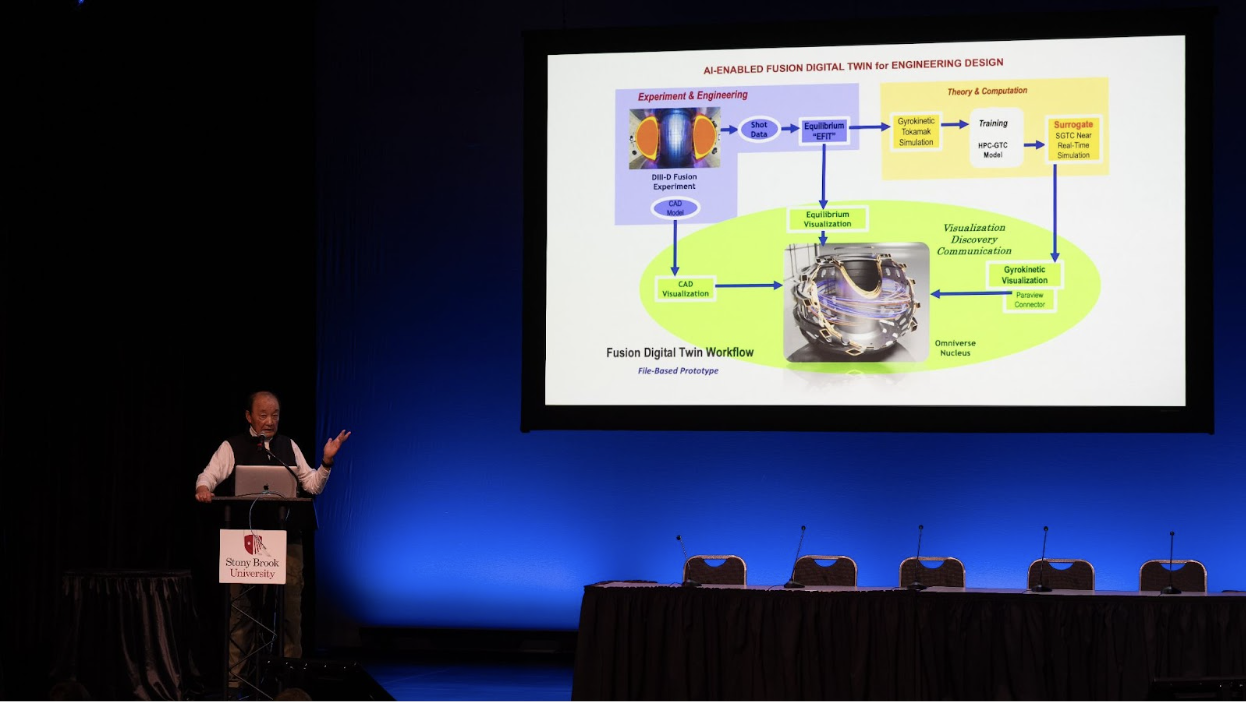
Stony Brook University hosted the 2025 Cray User Group (CUG) Meeting, an annual gathering of experts, researchers and technologists at the forefront of high-performance computing (HPC).
The event, held May 4-8 at the Westin Jersey City Newport hotel in New Jersey, brought together a global community to collaborate, share and advance the capabilities of Cray systems and supercomputing innovation.
CUG 2025, attended by nearly 200 HPC specialists from around the world, marked one of the most dynamic and well-attended meetings in recent history, showcasing a rich program of technical sessions, panels and workshops. The week-long event was energized by thought-provoking discussions and groundbreaking research presentations that reflected the rapid evolution of HPC in academia, industry and government research.
The event was officially opened with a welcome address by Robert Harrison, director of the Institute for Advanced Computational Science (IACS) at Stony Brook University. Harrison underscored the importance of collaborative innovation and the university’s commitment to advancing computational science. His remarks emphasized how CUG aligns with Stony Brook’s mission to be at the cutting edge of technological advancement and education.
A highlight of the conference was the keynote presentation by Mike Zingale, a leading figure in computational astrophysics and a professor at Stony Brook. Zingale captivated the audience with his talk on the role of supercomputing in modeling stellar explosions and astrophysical phenomena. His keynote not only showcased the extraordinary science made possible by HPC but also underscored the value of open collaboration between researchers and system developers.

As part of hosting the Cray User Group Meeting, Stony Brook also hosted a two-day workshop on Expanding Horizons in AI with HPC, May 9–10. The event, organized by Joseph Schuchart and Eva Siegmann of Stony Brook University, together with Shinjae Yoo of Brookhaven National Laboratory, was open to the public and brought together leading experts to explore the growing synergy between artificial intelligence (AI) and high-performance computing (HPC). The workshop highlighted the significant potential of challenges of combining AI and HPC to accelerate scientific research and innovation at scale.
On the first day, Bill Tang — a prominent computational physicist from Princeton University and the Princeton Plasma Physics Laboratory — delivered the opening keynote, sharing his experience and vision for how machine learning and advanced HPC can together fast-track solutions to some of science’s toughest problems. Tang’s talk set an optimistic tone, illustrating how the use of AI in scientific computing has made important contributions toward the utilization of fusion energy for grid energy generation.
The mini symposium successfully brought together researchers and engineers from local universities as well as nation-wide government labs and enterprises to discuss the challenges and opportunities of utilizing artificial intelligence in scientific research and computing.
Read the full stories about the CUG Meeting and the Expanding Horizons in AI with HPC workshop on the IACS website.

